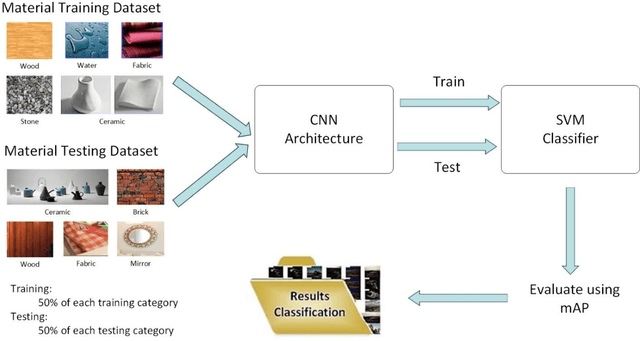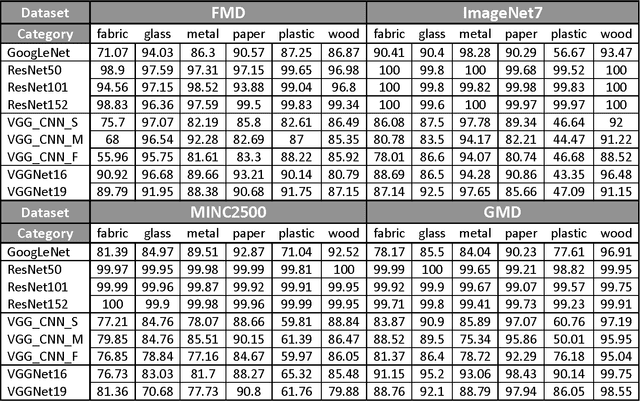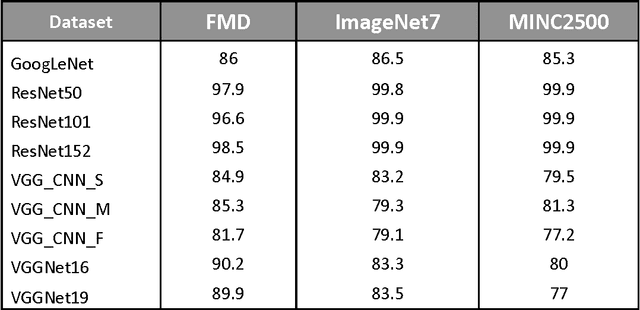Material Classification using Neural Networks
Paper and Code
Oct 17, 2017



The recognition and classification of the diversity of materials that exist in the environment around us are a key visual competence that computer vision systems focus on in recent years. Understanding the identification of materials in distinct images involves a deep process that has made usage of the recent progress in neural networks which has brought the potential to train architectures to extract features for this challenging task. This project uses state-of-the-art Convolutional Neural Network (CNN) techniques and Support Vector Machine (SVM) classifiers in order to classify materials and analyze the results. Building on various widely used material databases collected, a selection of CNN architectures is evaluated to understand which is the best approach to extract features in order to achieve outstanding results for the task. The results gathered over four material datasets and nine CNNs outline that the best overall performance of a CNN using a linear SVM can achieve up to ~92.5% mean average precision, while applying a new relevant direction in computer vision, transfer learning. By limiting the amount of information extracted from the layer before the last fully connected layer, transfer learning aims at analyzing the contribution of shading information and reflectance to identify which main characteristics decide the material category the image belongs to. In addition to the main topic of my project, the evaluation of the nine different CNN architectures, it is questioned if, by using the transfer learning instead of extracting the information from the last convolutional layer, the total accuracy of the system created improves. The results of the comparison emphasize the fact that the accuracy and performance of the system improve, especially in the datasets which consist of a large number of images.
 Add to Chrome
Add to Chrome Add to Firefox
Add to Firefox Add to Edge
Add to Edge